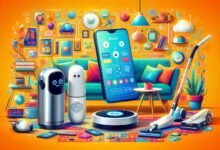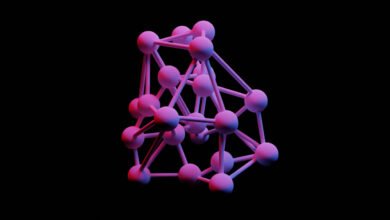Top IoT Trends to Watch in Healthcare and Smart Homes

The Internet of Things (IoT) is changing organizations since it allows objects to be connected, exchange data and make decisions. In part, IoT in healthcare and smart homes creates efficiency, improves users’ experiences, and strives for better results. From wearable health monitors to automating our homes (smart thermostats, smart security, smart lighting, smart appliances, and more), IoT devices are reshaping how we live and manage our well-being.
Consegic Business Intelligence says that Home Automation System Market size is estimated to reach over USD 155.05 Billion by 2031 from a value of USD 69.01 Billion in 2023 and is projected to grow by USD 75.13 Billion in 2024, growing at a CAGR of 10.6% from 2024 to 2031. All these sectors have embraced the use of IoT to a greater extent due to developments in the connectivity, AI, and data analytical stages.
There is increasing adoption of the IoT model due to the lowering price of sensors and smart devices. IoT solutions are also being made to solve certain needs in the medical and home management sectors to ensure better market adaptability and usability. This interlinked system can lead to a complete reshaping of how man and machines cohabitate and design built environments to better suit mankind.
Read More: Smart Home Security: Essential Tips for a Safe IoT Environment”
Key IoT Trends in Healthcare
Remote Patient Monitoring
RPM is one of the most successful innovations of IoT in the healthcare field. Some of the examples of use of such devices include glucometers for checking glucose levels, heart rate monitoring devices, and blood pressure cuffs for checking blood pressure all from the comfort of the patient’s own home. Patient control and involvement with RPM furthermore decrease the readmission rate of the hospital also enhances the management of chronic ailments. These systems are getting more progressive as 5G advances to ensure congenital gaps in healthcare are closed.
Some of the other diseases which are being addressed by hospitals and clinics are also using RPM to reduce some of operational intent. Through remote monitoring of patients, the overall working capacity is optimized in such a way that the essential care reaches the most deserving patients. Even better, it is possible to integrate RPM data with the patient’s electronic health records to facilitate the diagnosis and management process.
Smart Wearables for Health
Fitness track and smart watches are not mere fashion accessories or simply tiny computers on our wrist, they are the wearable tools of preventive or prognostic medicine. These devices track heart rate, movement, and even stress to give information to the user and his or her doctor.
Extending wearables with IoT platforms allows for smooth data exchange and facilitates creating of individualized therapy approaches and effective disease diagnosis.
Newer wearables provide features like ECG, tracking of fluid intake, and very basic features for the elderly like recognizing when they have fallen down. These functionalities not only act as a great Health Management tool but are also reassuring to the caregivers and the family members. However, the shift of wearables to medical devices is evident due to the essential part of health care in the current society.
IoT in Telemedicine
Telemedicine is getting popular and IoT devices are improving its outcomes. Modern connected technologies in the wearable medical devices help patients that have online appointments to share crucial hospitals’ data thus achieving accurate diagnosis and effective patient care. More importantly, telemedicine relying on the IoT makes much sense in regions where options of a healthcare center are a scarce resource. Thus, merging video consultations with IoT diagnostics, the telemedicine is proving geographical barriers in the sphere of healthcare.
There is a need to integrate telemedicine platforms with the IoT to obtain a rich patient assessment. For instance, IoT-endowed stethoscopes and otoscopes help physicians perform an online physical examination. While expanding the level of information use in healthcare services, telemedicine will go further changing the existing model of healthcare provision.• The Internet of Things and Predictive Healthcare Analyticsatforms enables seamless data sharing, paving the way for personalized treatment plans and early disease detection.
Advanced wearables now feature capabilities such as electrocardiogram (ECG) monitoring, hydration tracking, and even fall detection for the elderly. These functionalities do not only improve the aspect of personal preservation but also give care givers and family members a sense of relief. The progress of wearables into medical devices is evidence of how important the technology is in the contemporary world.
IoT in Telemedicine
Telemedicine is widely used, and IoT devices are improving its performance these days. Since the use of smart devices means that the doctor and the patient share information in real time during the virtual consultation, diagnosis of the problem is enhanced and the patient gets relevant care. Telemedicine that is supported by the Internet of Things is of great help when it comes to cases that are in regions that are hard to access when it comes to medical facilities. Through the video consultation with IoT diagnostics, the telemedicine is eradicating geographical characteristics in the field of health.
This paper shows that seamless integration of IoT into existing telemedicine platforms allows for better evaluation of the patient. For example, Peaks IoT stethoscopes and otoscopes facilitate remote physical examination of the patient. With these technologies keenly developing, telemedicine will still change the face of health care delivery systems, to be more embracing and effective.• Internet of Things and Predictive Healthcare Analyticspersonal health management but also provide caregivers and family members with peace of mind. The evolution of wearables into medical-grade devices underscores their critical role in modern healthcare.
IoT in Telemedicine
Telemedicine has gained traction, and IoT devices are enhancing its effectiveness. Smart medical devices allow for real-time data sharing during virtual consultations, enabling accurate diagnoses and better patient care. IoT-powered telemedicine is particularly valuable in remote areas, where access to healthcare facilities is limited. By combining video consultations with IoT diagnostics, telemedicine is overcoming geographical barriers in healthcare.
The integration of IoT with telemedicine platforms ensures a more comprehensive patient evaluation. For instance, IoT-enabled stethoscopes and otoscopes allow physicians to conduct physical exams remotely. As these technologies advance, telemedicine will continue to transform healthcare delivery, making it more inclusive and efficient.
IoT and Predictive Healthcare Analytics
As for the application of the digital healthcare internet of things is a transition from a reactive to a predictive model through the use of predictive analytics. Because of IoT, the health care provider can even analyze data collected by IoT devices and know disease prognosis. For instance, wearable data may provide information on early symptoms of heart disease that may not be well – understood and yet very critical and must be addressed as earliest. It is a trend that not only has favorable outcomes for the patents and costs nothing since the conditions that emerge for such treatments are fatal.
Further, the analysis detects the array of possibilities that affect health-care systems in order to manage available resources adequately. This apart, it can help predict the arrival of the patients, working staff schedules, and even assess the stock of the necessary products in a healthcare organization. As time passes and as there is access to more abundant and more comprehensive IO data, such forecasts of the further evolution of such models should become ever more reasonable as to encourage more rational action across the entire span of the healthcare system.
Key IoT Trends in Smart Homes
Smart Energy Management
IoT is improving the efficiency of energy saving within home using smart thermostat and smart lighting. These technologies are used in monitoring and providing remedies to energy usage real time and in point to possibly put into practice ways of controlling recurrent costs. Some of the special cases include, smart temperature control, thermostats control that fir the user behaviors, lighting systems which use IoT to turn off the light when the room is empty and it assists people to lead an environmentally friendly lifestyle.
Smart energy management has now come with IoT appliances since they include solar as a renewable power system. The homeowners can regulate production and use of energy in their homes without much strain. In addition, superior systems are able to measure energy needs depending on the climate for the maximum energy utility of a home or Home security and surveillance or Home automation System . These technologies are used to measure energy use, control and minimize expenses in real time. For instance, while smart thermostats enable themselves to actively analyse user patterns and adjust the temperature standards to the preferable manner, IoT-based lighting options automatically shut off if no one is present in the rooms contributing to sustainable living.
Smart energy products today enhance IoT products with solar electricity as well as other sources of power. This will enable homeowners to watch the energy production and the consumption in their house without stress. In addition, sophisticated systems anticipate require energy usage and depending on the weather conditions that are forcasted in order to avoid wastage.
Home Security and Surveillance
Smart home security refers to; security cameras, sensors, and locks that are part of the internet of things making the home’s security safer for the occupants. These devices help the homeowners manage their homes remotely; in addition, they receive a notification of any intrusion at once. Specific complex platforms employ AI to analyze the content of the video stream for potential danger. The aspects like convenience the IoT offers and safety put the systems among today’s home accessories.
Besides mere observation, most of the IoT devices boast of such elements as faces, license plate recognition, and records check with the police records. It eliminates the incidence of insecurity in a system as well as the time taken in responding to the issues. Intelligent safety systems, integrated in IoT as well, integrate complicated safe system and light alarms and so forth.
Voice-Activated Assistants
With the Amazon Alexa and Google Home, these have become merely the mode to smart home systems. These AI driven devices make it easy to operate smart devices in homes, especially lights, entertainment systems, among others. These assistants are as of now acquiring importance to perform day by day schedules and are now used for comfort and individuality.
Future developments of the voice recognition technology seek to take these assistants a notch higher. For instance, assistants could in the near future easily translate complicate instructions, identify feelings through vocal intonation, and respond accordingly. The voice-activated assistants will play an even bigger role in creating the superior smart home experience as they become more tightly connected with more devices.• Health and Wellness Devices in Smart Home of devices, voice-activated assistants will continue to elevate the smart home experience.
Health and Wellness Devices in Smart Homes
It is also seen that IoT has incorporated health and wellness into smart homes. Air quality monitors help in improving on the quality of air we breathe, and smart sleep trackers give us an indication of the quality of sleep we have had. Smart devices allow for healthy eating since they, for example, indicate when the fridge’s stock is replenished and offer recipes based on it. These innovation are improving quality of lifestyle by adopting a concept of well being.
The offering of IoT-based fitness equipment including smart treadmills and smart exercise bikes augments an elongated fit lifestyle. These devices give feedback, monitor, or progress and may even link the user to online workout sessions. Smart homes are now being designed not only to focus on physical but also central wellbeing.
This makes the following research question appropriate; what are the challenges and future prospects of online learning?
However, it is essential to understand that published policies and programs of IoT in healthcare, smart homes suffer from several dometicos. Due to technological advancement, new technologies pose new risks by harvesting it personal information from connected devices. Unfortunately, this is often hampered by lack of interoperability that makes it difficult to integrate different devices from different manufacturers. Mitigation of these challenges is essential in developing the IoT trust models which will facilitate the adoption of IoT systems.
There are current efforts to develop universal IoT device security as well as standards to connect the devices. Hardware creators are spending in cryptographical safe solutions and safe remote firmware updates for refusing compromising of users’ data. But the attaining the same goal remains a challenge in the current society because compliance across the different industries and the regulatory agencies is not a walk in the park.
IoT has great prospects in healthcare and smart residences because of such trends as 5G and edge computing. These advancements mean that devices will be more efficient and better in terms of online connection so data processing in real time will be possible and valuable decisions will be made. Advancements in artificial intelligence and machine learning will shore up IoT applications to increase the intelligence quotient of the solutions. In decades to come IoT ecosystems will become the very fabric of our existence where we will begin to experience unparalled convenience and care.
Another promising IoT related direction is the integration of IoT with blockchain technology. It was also found out that data sharing through blockchain ensures privacy and amongst the users there is trust. With the increase in IoT networks, these innovations will shape the future of possibilities in the spheres of healthcare and home automation.
Conclusion
Particularly, IoT is improving healthcare and smart homes through the connectivity of devices, provision of information, and improvement of experiences. Ranging from elevating patient satisfaction to generating more efficient houses, the possibilities of IoT are almost endless. While adopting such technologies we must also tackle related issues discreetly, so that IoT can improve our lives further, making them smarter, healthier and more sustainable. By providing information on these trends, one can help people and various organizations get ahead of this technological breakthrough.
It is, therefore, clear the IoT is rapidly evolving which reinforces the need for flexibility and creativity. These technologies are not only going to revolutionize companies and industries but society at large as it will create small communities that are individuals centered with health performance and sustainability as the core goals. With that, applying IoT in appropriate ways will help us to envision a world where technology will serve as a precious asset to human beings.
Author bio: I’m Anurag, a content writer currently at Consegic Business Intelligence. With over 3 years of professional experience, I’ve specialized as a ghostwriter for prominent companies and industry publications, exploring various topics.











